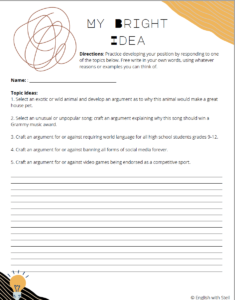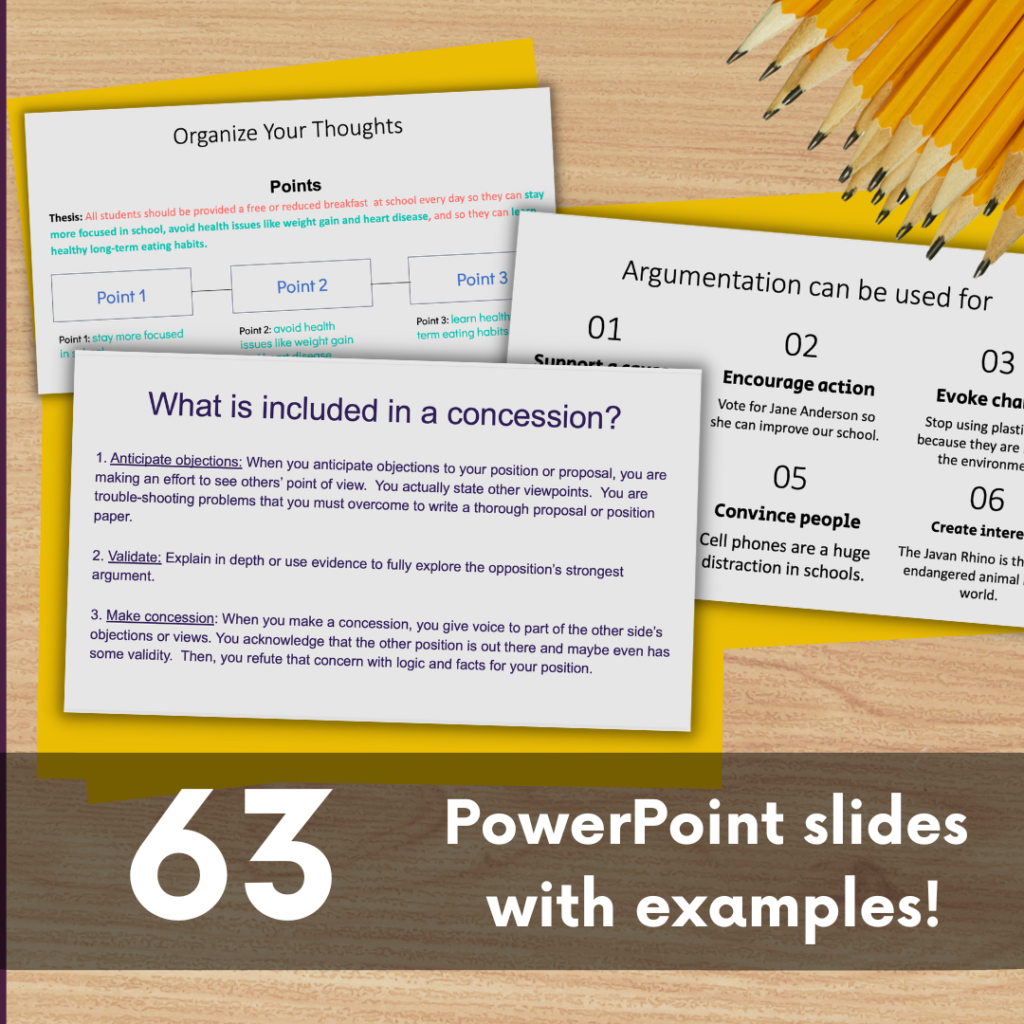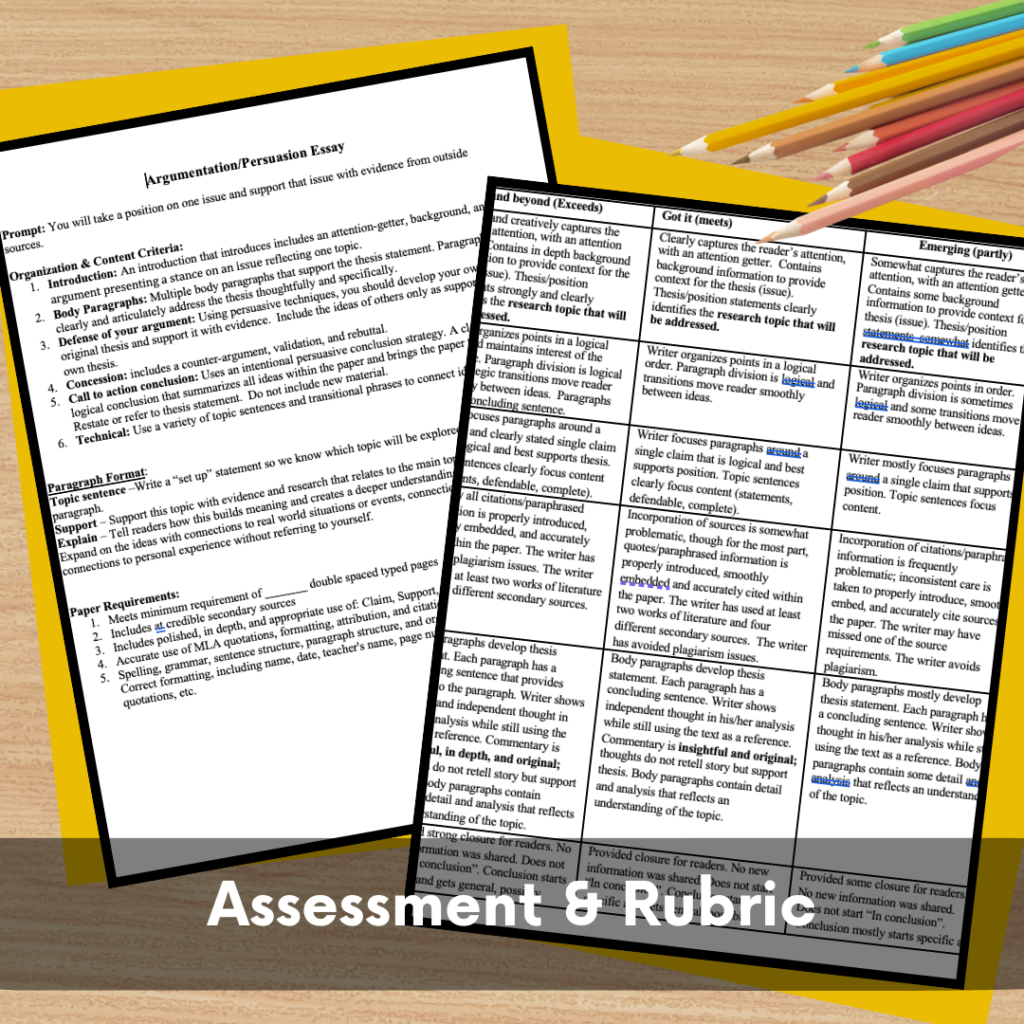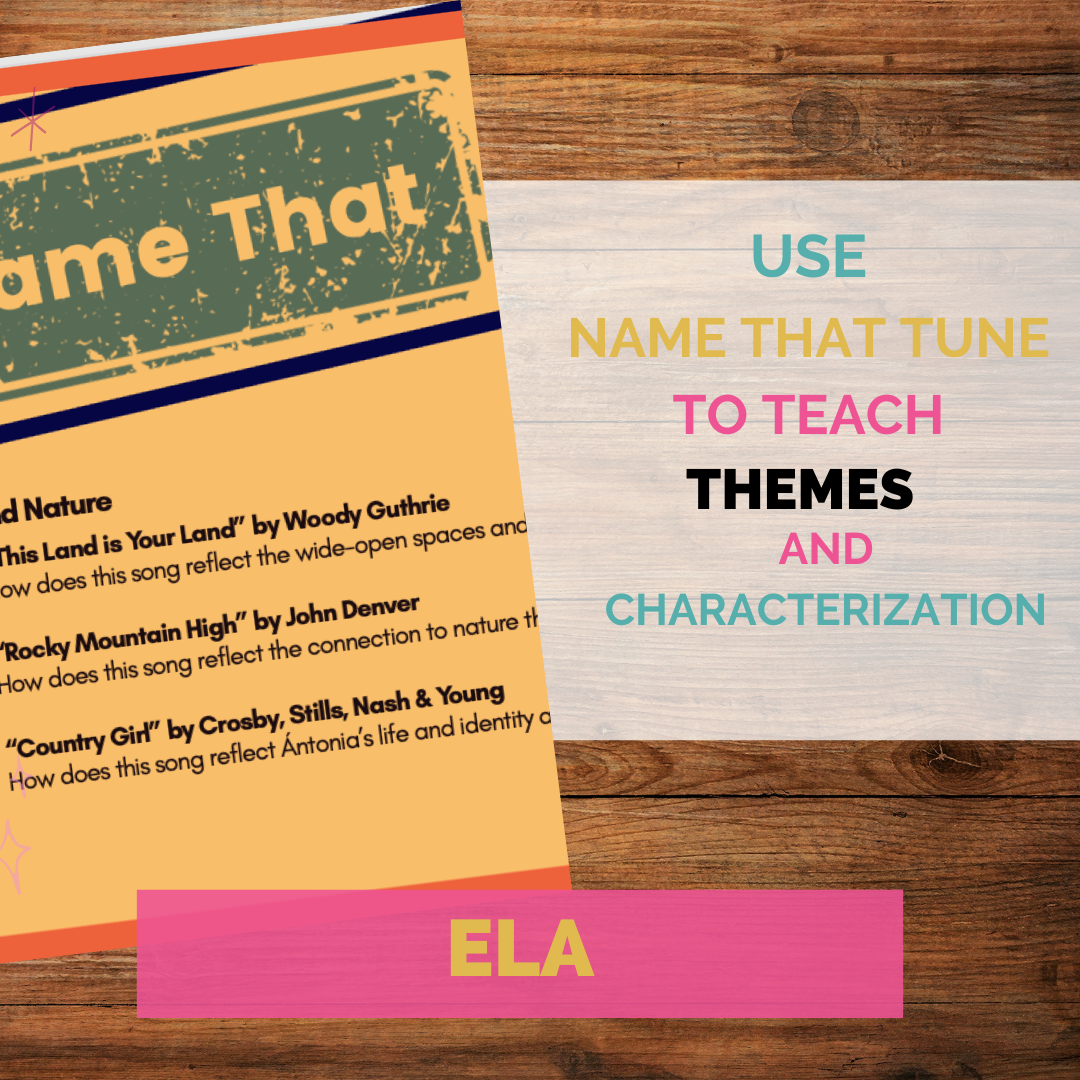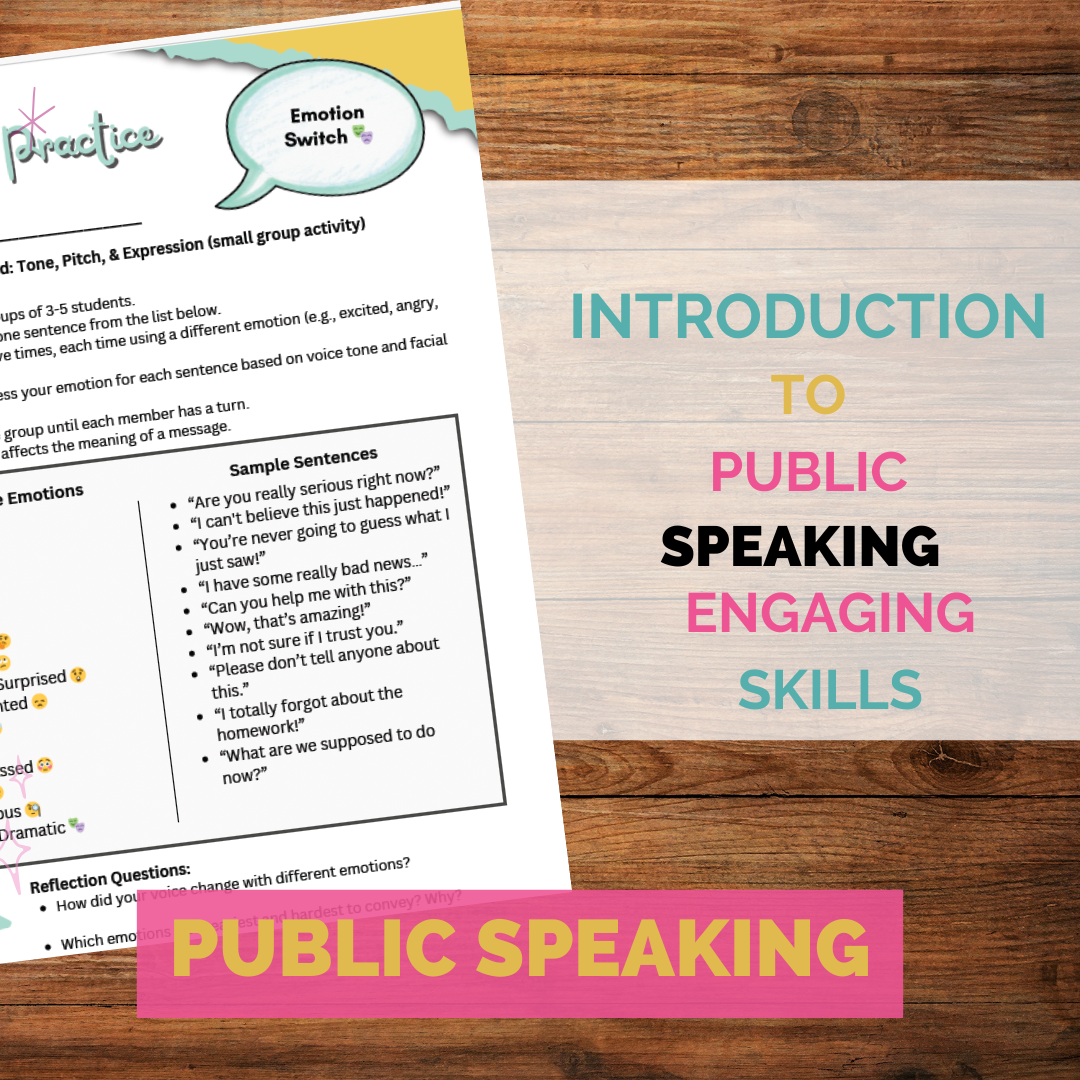The need for teaching persuasive techniques
Our students are digital natives who have grown up surrounded by 24/7 technology at all times. They never had to pull an encyclopedia off the shelf to look up information; they literally have all of the information they need at their fingers.
Teaching students to be news and media literate is key in helping them navigate how to determine the quality of media, identify persuasive techniques advertisers use to persuade them to purchase products, and discern fact from fiction has never been more important. This is why I developed a comprehensive persuasive writing unit to guide my students through the process of developing a sound, supporting, and thoughtful persuasive argument essay.
Teaching persuasive writing, argumentation, and rhetorical strategies can be a game-changer for your students. It not only enhances their writing skills but also empowers them to articulate their ideas effectively.
Persuasion vs. Argument
I start off my persuasive unit by explaining the purpose of persuasion and the difference between persuasion and an argument. So often, people are quick to debate, argue, and judge. The purpose of this introduction is to help students understand the value of constructing a thoughtful, well-supported argument to persuade.
Writing is a process
Idea Generation:
I start off my unit by encouraging students to brainstorm topics that lend themselves to two different sides to the issue. I have students complete a couple activities that specifically guide them through idea generation phase so they can select a topic that they are passionate about. Also, it’s important to guide to them to a topic that they can take a position on.
Often students have a hard time coming with topics without a little direction, so here are some great sites that offer debatable topics:
Writing is a Process
Step 1: Understanding Persuasive Writing
Kickoff with the Basics: Start by explaining what persuasive writing is all about. It’s writing meant to convince the reader to adopt a certain point of view or take a specific action. Introduce the key elements: a clear position, strong evidence, and persuasive language.
How-To Tip: Use real-world examples like advertisements, opinion pieces, and speeches to illustrate effective persuasive writing. This makes the concept more relatable and engaging for students.
Step 2: Choose a Topic
Brainstorming Session: Get your students excited by brainstorming topics they’re passionate about. Encourage them to think about issues they care about deeply, whether it’s environmental protection, school policies, or social justice.
How-To Tip: Create a list of potential topics together. Let students vote on their favorites to get everyone invested in the writing process from the start.
Step 3: Research and Gather Evidence
Research Skills: Teach students how to research their topics effectively. Emphasize the importance of using credible sources and gathering a variety of evidence, including statistics, expert opinions, and real-life examples.
How-To Tip: Provide a list of reliable websites and databases they can use for research. Show them how to evaluate sources for credibility and relevance.
Step 4: Develop a Strong Thesis Statement
Crafting the Thesis: Guide your students in crafting a clear and concise thesis statement. This statement should encapsulate their main argument and set the tone for their essay.
How-To Tip: Offer examples of strong and weak thesis statements. Have students practice writing their own and provide feedback to help them refine their statements.
Step 5: Plan and Organize
Outline the Essay: Teach students to create an outline before diving into writing. The outline should include an introduction, body paragraphs (each focusing on a single point with supporting evidence), and a conclusion.
How-To Tip: Use graphic organizers to help visual learners map out their essays. Encourage students to use bullet points or numbering to keep their thoughts organized.
Step 6: Writing the Introduction
Hook Your Readers: Show students how to write an engaging introduction. Start with a hook—an interesting fact, a question, or a brief anecdote—that grabs the reader’s attention.
How-To Tip: Have students practice writing different types of hooks. Share some standout examples from professional writers to inspire them.
Step 7: Crafting Body Paragraphs
Building Strong Arguments: Each body paragraph should focus on one main point. Teach students to use topic sentences to introduce these points and follow up with evidence and analysis.
How-To Tip: Encourage students to use the PEEL method: Point, Evidence, Explanation, and Link. This structure helps them stay focused and ensures each paragraph contributes to their overall argument.
Step 8: Using Rhetorical Strategies
Incorporating Rhetoric: Introduce rhetorical strategies such as ethos (credibility), pathos (emotional appeal), and logos (logical reasoning). Show students how to weave these elements into their writing to strengthen their arguments.
How-To Tip: Analyze famous speeches or persuasive essays to identify rhetorical strategies in action. Have students practice incorporating these techniques into their own writing.
Step 9: Writing the Conclusion
Wrapping It Up: Teach students how to write a compelling conclusion that reinforces their thesis and main points. Encourage them to end with a call to action or a powerful closing thought.
How-To Tip: Provide a checklist for the conclusion: restate the thesis, summarize key points, and leave the reader with something to think about.
Step 10: Revising and Editing
Polishing the Essay: Emphasize the importance of revising and editing. Teach students to look for clarity, coherence, and persuasiveness in their drafts. Encourage peer reviews to provide fresh perspectives.
How-To Tip: Create a revision checklist that students can use to self-assess their work. Include items like checking for strong evidence, logical flow, and effective use of rhetorical strategies.
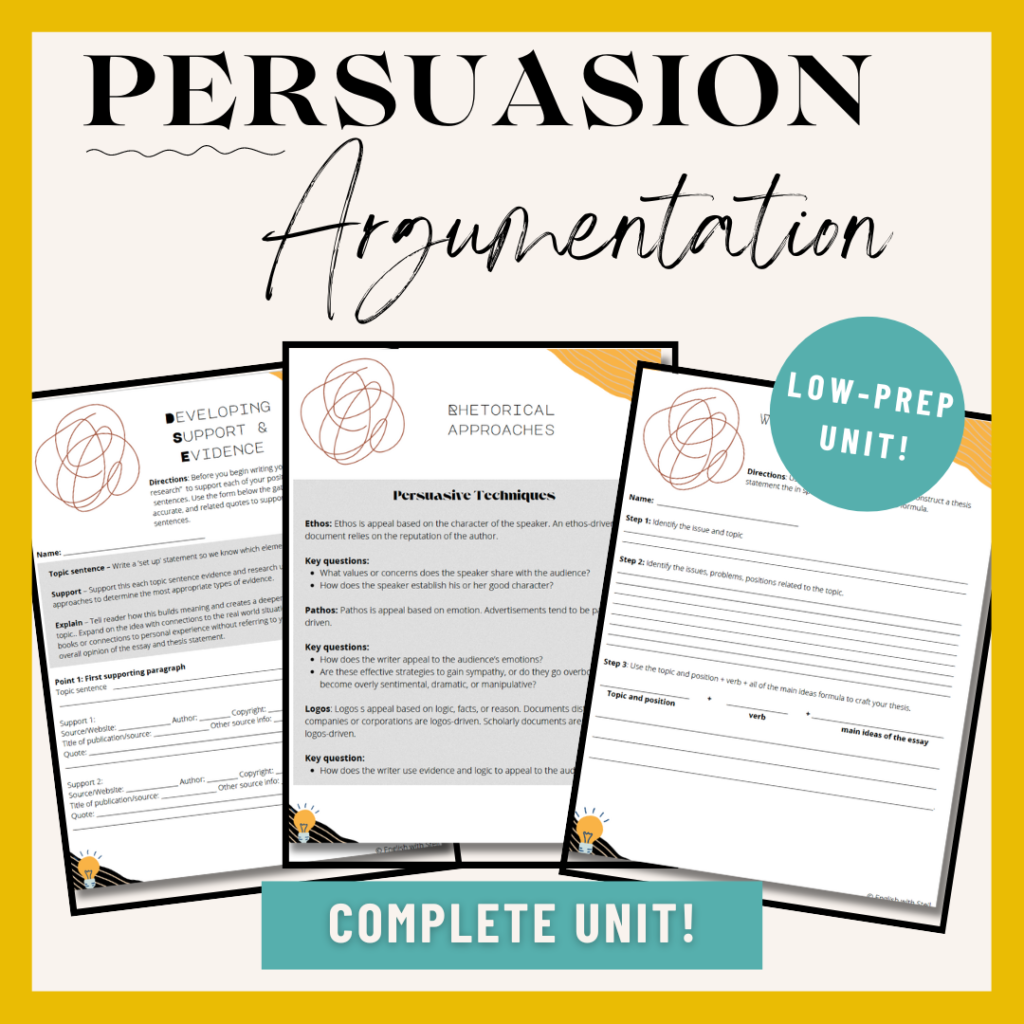
Rhetorical Appeals:
Once students have their topic and position selected, it’s important for students to learn about the rhetorical approaches to persuasion: ethos, pathos, and logos. It’s tempting to urge students to jump into a persuasive position statement, but providing the context of a rhetorical appeal will help craft a well-supported and logical essay.
Organizing Ideas
When I teach the writing process, I focus on the PROCESS part of instruction.
Think pizza: When I introduce the process of writing, I use the metaphor of making a pizza: we might all like different ingredients, we may put our ingredients on the pizza in a different order, but no matter what differences of making the pizza are, there are some core principles inherit in all pizzas: a crust, a sauce, cheese, and topics.
In writing a persuasive essay, the core ingredients are:
- An introduction and thesis statement that includes a clear position and directs the reader.
- Strong body paragraphs that include evidence and analysis to support the thesis.
- A concession paragraph that acknowledges the opposition.
- A conclusion/call to action that reinforces the position and calls the reader to act on behalf of the option.
My unit plan includes several worksheets to help break up the process into smaller steps to make it easier for students for each step of the writing process:
- Thesis Practice
- Writing an Original Thesis
- Thesis Peer Editing Checklist
- Writing an Introduction
- Developing Topic Sentences
- Developing Support and Evidence
- Rhetorical Approaches
- Body Paragraphs Template
- Concession Practice
- Writing the conclusion
Students will practice organizing, drafting, and editing a polished and well-written essay.
- Self and Peer Editing Rubric
- Transitions for Flow
Check out some exciting resources from my ELA colleagues:
Writing a Persuasive Essay Portfolio – by the SuperHERO Teacher
Three Proven Strategies for Teaching Writing -by The Secondary English Coffee Shop
Teaching Persuasive Techniques-by Staci Lloyd
Persuasive Techniques and Media Literacy– by Nouvelle ELA

